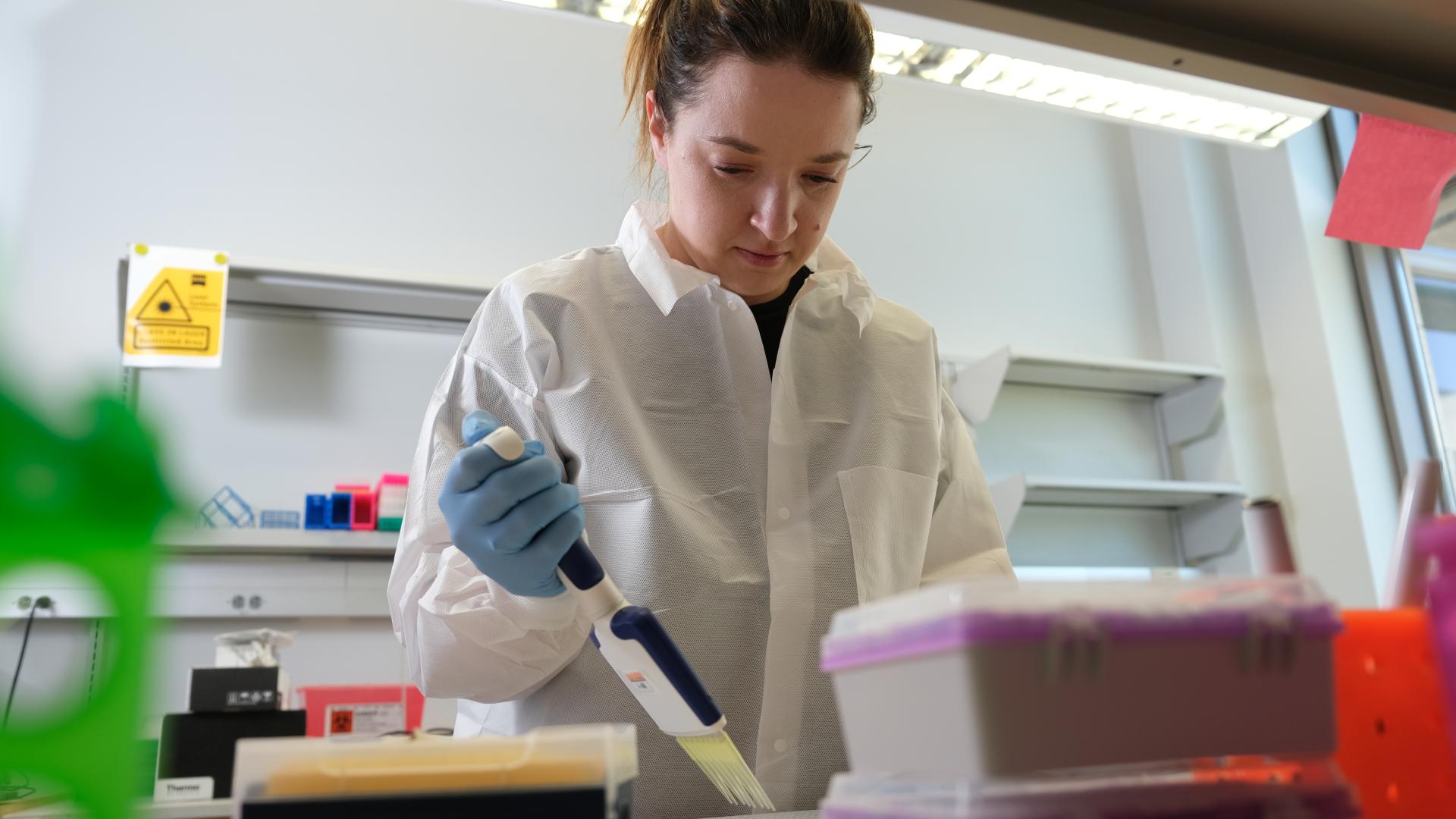
Currently, many patients with wet age-related macular degeneration (AMD) require monthly injections into the eye to preserve their vision. Those with advanced dry AMD, also called geographic atrophy (GA), have no effective treatments available to them. Fortunately, AMD research and drug developments are advancing rapidly to bring patients better treatments.
Wet Age-Related Macular Degeneration
For wet AMD, the standard treatments are intraocular injections of drugs that block vascular endothelial growth factor (VEGF). These drugs are Beovu®, Eylea®, Lucentis®, or Avastin®.
Abicipar
Abicipar is another drug that is injected into the eye to target VEGF. Phase III trials showed that it can last as long as 12 weeks. Because it can cause intraocular inflammation, the FDA has not approved it, but it may undergo modification and/or additional testing.
Port Delivery System
The port delivery system (PDS) is a device implanted into the wall of the eye during a surgical procedure that can store, and slowly release, Lucentis (ranibizumab). This may result in fewer office visits and treatments. Once the PDS runs out of Lucentis, it can be refilled during an office visit. The phase III clinical trial called called Archway showed that 98% of patients can go 6 months between treatments.
RGX-314
Retinal gene therapy for AMD appears very promising now that retinal gene therapy has been approved by the FDA for another disease called Leber’s congenital amaurosis. RGX-314 is an anti-VEGF treatment delivered by gene therapy. It has the potential to block VEGF for years following a surgical procedure in which a harmless virus, called adeno-associated virus (AAV), carrying the anti-VEGF gene, is injected under the retina in the operating room. In a phase I/II trial with 42 patients, 9 of the 12 patients receiving the highest virus- dose did not require any further anti-VEGF injections in the six months following the RGX-314 injection. No drug-related serious adverse events were observed.
ADVM-022
ADVM-022 is another AAV-anti-VEGF gene therapy, but in contrast to RGX-314, it is injected into the vitreous (which is the substance that fills in the region from the lens to the back of the eye), like Lucentis, Eylea, and Avastin. This means that it can be delivered in the office rather than the operating room. In clinical trials, this drug also dramatically reduced the need for additional treatments, and some patients have gone for at least a year without the need for anti-VEGF drug injections. It can cause inflammation, but this has responded to treatment with steroid eye drops. Clinical trials are continuing.
GB-102
Another drug that blocks VEGF, by inhibiting its receptor, is called Sunitinib. One form is injected into the eye as a sustained release depot (GB-102) and lasted at least six months in a phase I/IIa clinical trial. This drug has now advanced to phase 2b clinical trials.
Combination Drugs
Cosopt® (Dorzolamide-timolol) and Anti-VEGF Drugs
Since VEGF isn’t the only protein that signals harmful blood vessels to grow and leak in wet AMD, several drugs targeting additional proteins are being tested in combination with anti-VEGFs. Cosopt® (Dorzolamide-timolol) is an eye drop used for glaucoma. Early results suggest these eye drops can decrease retinal fluid accumulation in wet AMD in combination with injected anti-VEGF drugs. This is now being tested in a phase III trial. It may be particularly helpful in patients who don’t respond optimally to anti-VEGF drugs alone.
OPT-302 and Anti-VEGF Drugs
Another drug targeting new forms of VEGF, called VEGF C and D (OPT-302), is also in phase II trials, injected in combination with a traditional VEGF inhibitor. Results of this trial show that patients receiving monthly injections of OPT-302 in combination with Lucentis had better visual acuity outcomes than with Lucentis alone.
RG7716 and REGN 910-3
Angiopoietin II is another protein that promotes wet AMD. This is being targeted in phase II trials by RG7716 and REGN 910-3. These are injected with an anti-VEGF drug. RG7716 is unique in that it’s a single antibody that targets both VEGF and Angiopoietin II. It has the potential to work better than drugs that target only one of these blood vessel growth-promoting proteins.
Other Drug Developments
Also, being tested in clinical trials with wet AMD patients are the proteins endoglin, activin, and tissue factor. These proteins are involved in the growth of new blood vessels (angiogenesis), which is a key process involved in the development of the wet form of AMD.
Advanced Dry Age-Related Macular Degeneration
For patients with advanced dry age-related macular degeneration, also called geographic atrophy (GA), there is currently no FDA-approved therapy. There are, however, several treatments that are currently in clinical trials.
Apl-2
However, in a phase II trial, the complement C3 inhibitor Apl-2 significantly inhibited expansion of the area of atrophy. Complement is an arm of the immune system that seems to be overactive in AMD. The drug is now in phase III clinical trials. Apl-2 is injected into the eye either monthly or every other month. This drug is also being tested for wet AMD.
Zimura
Zimura® (avacincaptad pegol), which inhibits another protein in the complement cascade, C5, is also being tested by intraocular injection for GA. In a phase II trial, it slowed the growth of GA.
Oracea
Several oral drugs are also being tested for GA. These include Oracea, which is the antibiotic doxycycline. It has anti-inflammatory activities that may be beneficial for patients with geographic atrophy. This drug is in phase II/III trials.
Metformin
Another drug with anti-inflammatory properties is the diabetes medication, metformin. A retrospective study of patients at the University of Florida found that patients taking metformin had a decreased risk of developing AMD.
Stem Cells
Stem cells are also being injected into the eye in trials for GA. Some of these small trials suggest the approach if done correctly within clinical trials, can be safe and possibly helpful. Some of the transplants use cells layered on thin scaffolds, and others employ cells kept in a fluid suspension and injected under the retina. The addition of Rho-kinase inhibitors may help protect vision cells from damage induced by the surgical procedure. Beware of clinics that offer stem cell therapy outside a clinical trial; several patients have lost vision after such treatments.
About BrightFocus Foundation
BrightFocus Foundation is a premier global nonprofit funder of research to defeat Alzheimer’s, macular degeneration, and glaucoma. Through its flagship research programs — Alzheimer’s Disease Research, Macular Degeneration Research, and National Glaucoma Research— the Foundation has awarded nearly $300 million in groundbreaking research funding over the past 51 years and shares the latest research findings, expert information, and resources to empower the millions impacted by these devastating diseases. Learn more at brightfocus.org.
Disclaimer: The information provided here is a public service of BrightFocus Foundation and is not intended to constitute medical advice. Please consult your physician for personalized medical, dietary, and/or exercise advice. Any medications or supplements should only be taken under medical supervision. BrightFocus Foundation does not endorse any medical products or therapies.
- Medications










